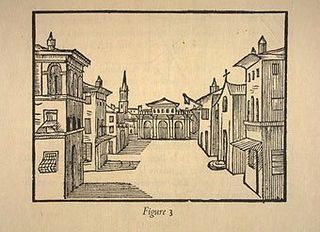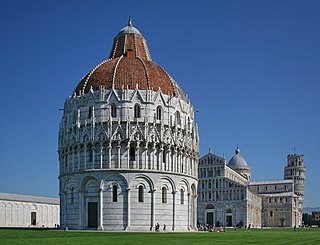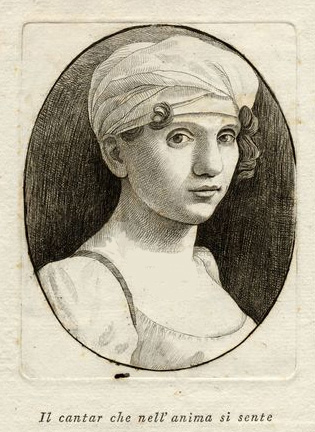Related Research Articles

NeXTSTEP is a discontinued object-oriented, multitasking operating system based on the Mach kernel and the UNIX-derived BSD. It was developed by NeXT Computer in the late 1980s and early 1990s and was initially used for its range of proprietary workstation computers such as the NeXTcube. It was later ported to several other computer architectures.
The ossicles are three bones in either middle ear that are among the smallest bones in the human body. They serve to transmit sounds from the air to the fluid-filled labyrinth (cochlea). The absence of the auditory ossicles would constitute a moderate-to-severe hearing loss. The term "ossicle" literally means "tiny bone". Though the term may refer to any small bone throughout the body, it typically refers to the malleus, incus, and stapes of the middle ear.

A rug is a piece of cloth, similar to a carpet, but it does not span the width of a room and is not attached to the floor. It is generally used as a floor covering, or as a decorative feature. Rug making is the process of crafting a rug from various textile materials. Historically, there has been a variety of methods of rug making, including braiding, hooking, and weaving. These processes can be carried out by hand, using smaller tools like a latch hook, or using a weaving machine. Rag rugs are a historically notable and widespread form of hooked rug making. Rug hooking is both an art and a craft where rugs are made by pulling loops of yarn or fabric through a stiff woven base such as burlap, linen, or rug warp. The loops are pulled through the backing material by using a crochet-type hook mounted in a handle for leverage.
Scenography is a practice of crafting stage environments or atmospheres. In the contemporary English usage, scenography can be defined as the combination of technological and material stagecrafts to represent, enact, and produce a sense of place in performance. While inclusive of the techniques of scenic design and set design, scenography is a holistic approach to the study and practice of all aspects of design in performance.

Ravello is a town and comune situated above the Amalfi Coast in the province of Salerno, Campania, Southern Italy, with approximately 2,500 inhabitants. Its scenic location makes it a popular tourist destination, and earned it a listing as a UNESCO World Heritage Site in 1997.

Alba Fucens was an ancient Italic town located at 1,000 m (3,300 ft) elevation at the base of Monte Velino, approximately 6.5 km (4.0 mi) north of Avezzano, Abruzzo, central Italy. Its ruins can be found in the comune of Massa d'Albe.

Police 911, called The Keisatsukan in Japan and Police 24/7 in Europe, is a series of light gun shooter arcade games. Konami released the first game in 2000.

Nicola Sabbatini, also known as Niccolò Sabbatini or Nicola Sabbattini, was an Italian architect of the Baroque.

L'œil du prince is a French expression popularized by Nicola Sabbatini (1574–1654), an Italian stage designer and architect of the Renaissance in his famous treatise published in 1638. It is an imaginary point in the audience of a theatre, located in its central axis, approximately 0.6 m above the stage, and at a distance equal to the stage's width. In most theaters it corresponds more or less to the seventh row of seats. Sabbatini, in a chapter in his book, describes ‘How to Place the Prince’s Seat’, where "all the objects in the scene appear better... than from any other place". It is considered the best place and the most coveted one in the audience, which was reserved for the nobility. Due to the importance of these spectators, of course, many theater shows had their main movements and happenings designed in order to attract the attention of the prince's eye.

The Pisa Baptistery of St. John is a Roman Catholic ecclesiastical building in Pisa, Italy. Construction started in 1152 to replace an older baptistery, and when it was completed in 1363, it became the second building, in chronological order, in the Piazza dei Miracoli, near the Duomo di Pisa and the cathedral's free-standing campanile, the famous Leaning Tower of Pisa. The baptistery was designed by Diotisalvi, whose signature can be read on two pillars inside the building, with the date 1153.

The Teatro San Cassiano was the world's first public opera house, inaugurated as such in 1637 in Venice. The first mention of its construction dates back to 1581. The name with which it is best known comes from the parish in which it was located, San Cassiano, in the Santa Croce district (‘sestiere’) not far from the Rialto.

Lanaja is a municipality located in the province of Huesca, Aragon, Spain. According to the 2011 census (INE), the municipality has a population of 1,381 inhabitants. The village has approximately 1,100 inhabitants; the neighbouring villages of Cantalobos and Orillena comprise an additional 400.

Capo Colonna is a cape in Calabria located near Crotone. In ancient Roman times the promontory was called Promunturium Lacinium. The modern name derives from the remaining column of the Temple of Hera Lacinia.

Stabiae was an ancient city situated near the modern town of Castellammare di Stabia and approximately 4.5 km southwest of Pompeii. Like Pompeii, and being only 16 km (9.9 mi) from Mount Vesuvius, this seaside resort was largely buried by tephra ash in 79 AD eruption of Mount Vesuvius, in this case at a shallower depth of up to 5 m.

Pisaster ochraceus, generally known as the purple sea star, ochre sea star, or ochre starfish, is a common seastar found among the waters of the Pacific Ocean. Identified as a keystone species, P. ochraceus is considered an important indicator for the health of the intertidal zone.
Knowledge extraction is the creation of knowledge from structured and unstructured sources. The resulting knowledge needs to be in a machine-readable and machine-interpretable format and must represent knowledge in a manner that facilitates inferencing. Although it is methodically similar to information extraction (NLP) and ETL, the main criterion is that the extraction result goes beyond the creation of structured information or the transformation into a relational schema. It requires either the reuse of existing formal knowledge or the generation of a schema based on the source data.

Elisabetta Manfredini-Guarmani was an Italian opera singer best known for having created the leading soprano roles in four of Rossini's operas, roles which he wrote specifically for her voice. She was born Antonia Elisabetta Manfredini in Bologna and was the daughter of the composer and music theorist Vincenzo Manfredini. After her stage debut in 1810 when she sang in the premiere of Stefano Pavesi's Il trionfo di Gedeone at Bologna's Teatro del Corso, she went on to perform at La Fenice, La Scala, Teatro Regio di Torino, Rome's Teatro Argentina and several other opera houses, primarily in Northern Italy. In addition to the roles she created in Rossini's operas, she also sang in the world premieres of operas by several composers who are lesser known today, including Pietro Raimondi, Simon Mayr, and Ferdinando Paër. Her last known appearance was in 1828 after which there is no further trace of her. The date and place of her death are unknown.

The Greek theatre of Syracuse lies on the south slopes of the Temenite hill, overlooking the modern city of Syracuse in southeastern Sicily, Italy. It was first built in the 5th century BC, rebuilt in the 3rd century BC and renovated again in the Roman period. Today, it is a part of the Unesco World Heritage Site of "Syracuse and the Rocky Necropolis of Pantalica".
Santa Maria Lacrimosa degli Alemanni is a small church and sanctuary, built during the Renaissance era, and located on Via Mazzini number 65 in central Bologna, Italy.

Gaspare Canino was an Italian artist and one of the last puppetmasters of the Canino family, working in Alcamo in the province of Trapani; his activity, interrupted in 1970, has been resumed in 1990 by Salvatore Oliveri, his grandson.
References
- Sabbatini, N. Pratica di fabricar scene e macchine ne' teatri, Ravenna, 1638.
- https://web.archive.org/web/20010104221100/http://www.acs.appstate.edu/orgs/spectacle/index.html